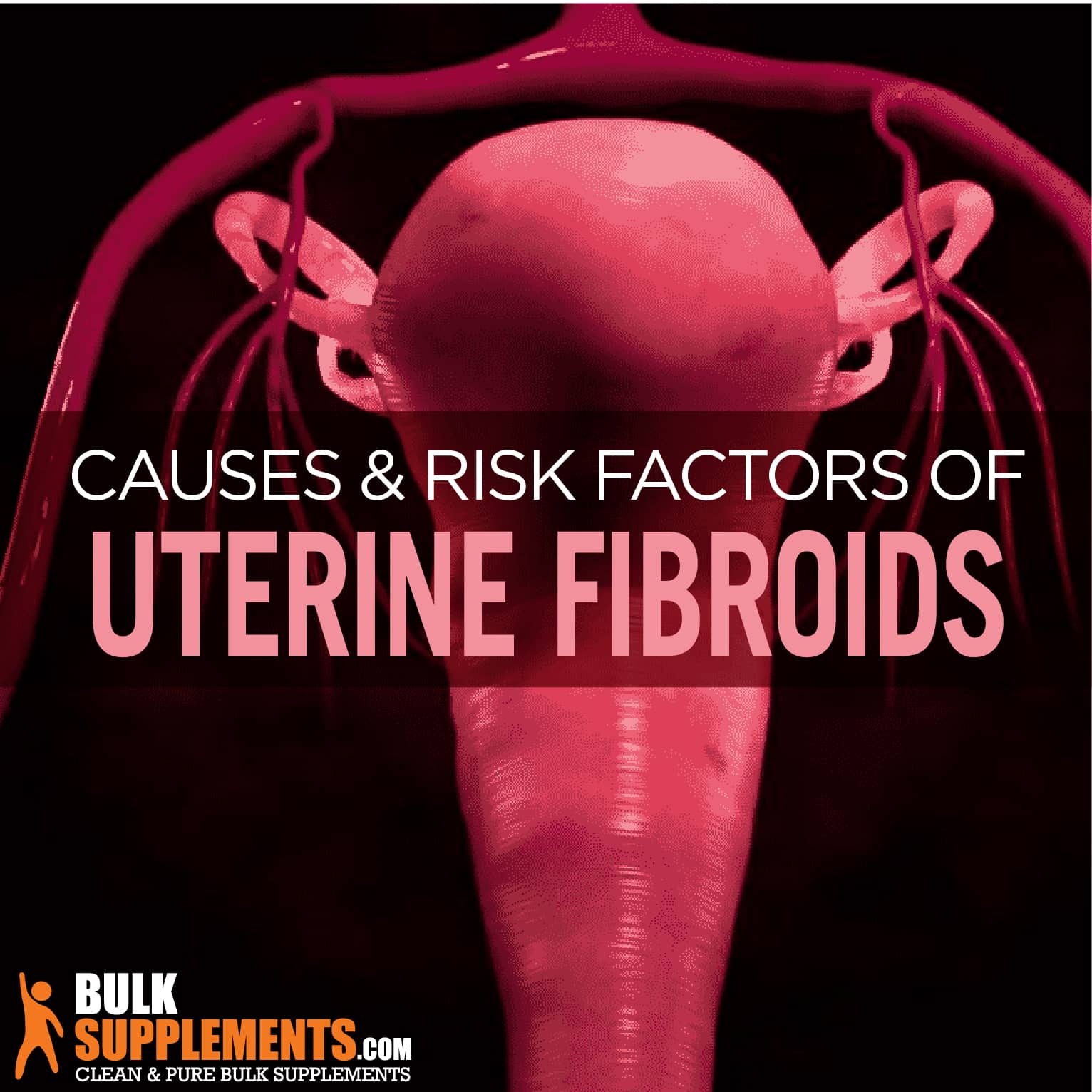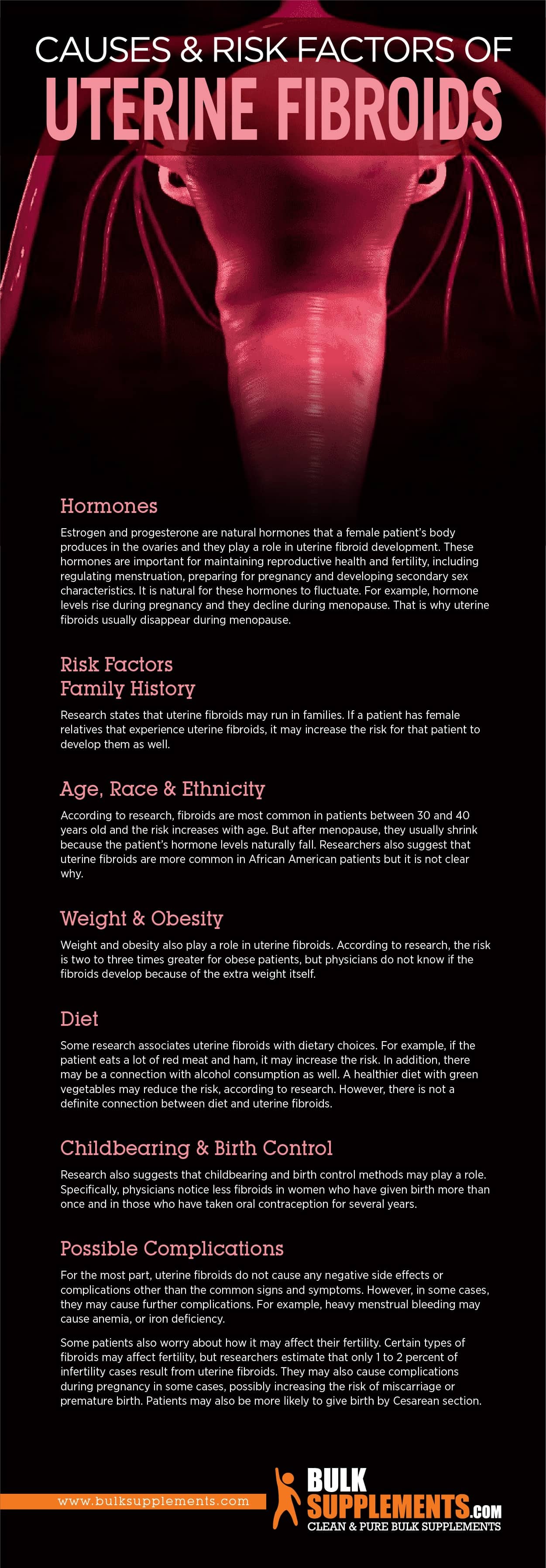Uterine Fibroids: Symptoms, Causes & Treatment
by James Denlinger Digital Marketing Strategist
What are Uterine Fibroids?
Uterine fibroids are benign (noncancerous) tumors made of muscle cells and connective tissue that grow in a female patient’s uterus (womb). They are common among women in their childbearing years. In fact, some studies report that 20 to 80 percent of women have fibroids at the age of 50. Fibroids can cause several symptoms depending on their location, size and proximity to the adjacent pelvic organs. Some of the most common symptoms include pain and pressure in the lower abdominal area and abnormal bleeding during menstruation.
Uterine fibroids are also called uterine myomas or leiomyomas. They are usually not connected or related to uterine cancer. Fibroids can develop in a cluster or in a single nodule and may range in size from 1 mm to 20 cm (8 inches) in diameter. Most women who have fibroids in the uterus do not show signs or symptoms. In fact, patients often discover uterine fibroids accidentally through routine ultrasounds and pelvic exams. However, if a patient does experience symptoms they depend on the number of fibroids in the womb, their size and location.
Symptoms of Uterine Fibroids
If a uterine fibroid causes symptoms, the most probable signs include:
- Prolonged menstrual periods
- Pelvic pain and pressure
- Heavy menstrual bleeding
- Severe and painful periods
Typically, many patients do not show any symptoms and most patients who do are between the ages of 30 and 50. Specifically, they usually cause symptoms if they affect the womb’s function. There are different types of uterine fibroids depending on where they develop and they may cause different symptoms.
For example, intramural fibroids grow in the wall of the womb, while submucosal fibroids develop directly under the lining of the womb. Submucosal fibroids are more likely to cause heavy menstrual bleeding. Subserosal fibroids develop on the outer wall of the womb and intraligamentary fibroids develop in the tissue next to it. In addition, cervical fibroids develop in the cervix.
If the fibroid is large, it can put pressure on the bladder or bowels, possibly causing constipation or difficult and frequent urination. The growths may also put pressure on the patient’s back and cause back pain.
Causes & Risk Factors for Uterine Fibroids
Fibroids are benign tumors that develop in a female patient’s uterus. Tumors develop if cells divide abnormally and very quickly, forming a mass in the body. Uterine fibroids can grow rapidly or they may grow slowly and remain the same size for years. Researchers do not know exactly what causes uterine fibroids to develop in some women and not others. However, researchers do know that they are controlled by hormones, specifically estrogen and progesterone.
Hormones
Estrogen and progesterone are natural hormones that a female patient’s body produces in the ovaries and they play a role in uterine fibroid development. These hormones are important for maintaining reproductive health and fertility, including regulating menstruation, preparing for pregnancy and developing secondary sex characteristics. It is natural for these hormones to fluctuate. For example, hormone levels rise during pregnancy and they decline during menopause. That is why uterine fibroids usually disappear during menopause.
Risk Factors
Family History
Research states that uterine fibroids may run in families. If a patient has female relatives that experience uterine fibroids, it may increase the risk for that patient to develop them as well.
Age, Race & Ethnicity
According to research, fibroids are most common in patients between 30 and 40 years old and the risk increases with age. But after menopause, they usually shrink because the patient’s hormone levels naturally fall. Researchers also suggest that uterine fibroids are more common in African American patients but it is not clear why.
Weight & Obesity
Weight and obesity also play a role in uterine fibroids. According to research, the risk is two to three times greater for obese patients, but physicians do not know if the fibroids develop because of the extra weight itself.
Diet
Some research associates uterine fibroids with dietary choices. For example, if the patient eats a lot of red meat and ham, it may increase the risk. In addition, there may be a connection with alcohol consumption as well. A healthier diet with green vegetables may reduce the risk, according to research. However, there is not a definite connection between diet and uterine fibroids.
Childbearing & Birth Control
Research also suggests that childbearing and birth control methods may play a role. Specifically, physicians notice less fibroids in women who have given birth more than once and in those who have taken oral contraception for several years.
Possible Complications
For the most part, uterine fibroids do not cause any negative side effects or complications other than the common signs and symptoms. However, in some cases, they may cause further complications. For example, heavy menstrual bleeding may cause anemia, or iron deficiency.
Some patients also worry about how it may affect their fertility. Certain types of fibroids may affect fertility, but researchers estimate that only 1 to 2 percent of infertility cases result from uterine fibroids. They may also cause complications during pregnancy in some cases, possibly increasing the risk of miscarriage or premature birth. Patients may also be more likely to give birth by Cesarean section.

Diagnosing Uterine Fibroids
Sometimes patients discover uterine fibroids through routine pelvic exams, since they often do not cause any symptoms. The doctor may feel the growth with their fingers or use other imaging tests, such as an ultrasound, X-ray, CT scan or MRI. Other diagnostic tests may include a hysteroscopy or laparoscopy.
A hysteroscopy is a method that allows a doctor to look inside the uterus to diagnose abnormal bleeding. It uses a small apparatus with a camera attached to the end to examine the inside of the uterus. The doctor inserts it through the vagina and into the uterus through the cervix.
On the other hand, a laparoscopy is a surgical, diagnostic operation that doctors use to check the organs inside the abdomen. The doctor inserts a small tube with a lighted camera through the abdominal wall and makes a small opening in the skin of the abdomen to view the organs.
Uterine Fibroid Treatment
Fibroids often grow slowly or not at all. In some cases they shrink on their own, especially after menopause. Most patients are not even aware of them unless they cause symptoms. A doctor can come up with the best plan for treatment. Treatment may depend on the fibroid’s location and size and whether it causes symptoms. The doctor will also take into account the patient’s age and whether they may want to have children in the future.
Medication
In mild cases, a doctor may recommend medication for pain or heavy bleeding. In addition, the patient may find relief from birth control pills or hormone injections to help control the symptoms.
Surgery
In moderate to more severe cases the patient may require surgery, including:
- Hysterectomy
- Myomectomy
- Myolysis
- Endometrial ablation
- Uterine fibroid embolization (UFE)
Dietary Changes
Changes in behavior may also have significant effects on uterine fibroids, such as dietary choices and other healthy lifestyle practices. For example, patients should focus on foods that may help detoxify the body, such as kale, turnips, arugula, radishes, broccoli, cabbage and watercress. Food with carotenoids are also a good choice for everyday health, such as spinach, sweet potatoes, apricots, cantaloupe and pumpkin. Anti-inflammatory foods like fresh rosemary and pineapple may also help reduce inflammation, according to experts. Try to include foods with vitamin E, such as hazelnuts, cod, almonds and wheat germ. In addition, green tea may also help neutralize estrogen and its effects that may contribute to uterine fibroids.
In addition to dietary changes, patients may also benefit their overall reproductive health with vitamins. Try to take daily vitamins or multivitamins with vitamin C, vitamin D, vitamin E, folic acid, vitamin A, vitamin B1 (thiamine), riboflavin (vitamin B2), niacin (vitamin B3), vitamin B6 and vitamin B12.
Supplements for Female Reproductive Health
Patients may also find relief from natural dietary supplements. They may improve overall reproductive health, but they are not a cure for uterine fibroids or any other medical condition. Consult a doctor before taking any supplements.
DHEA
DHEA is a hormone that the body produces to make other male and female sex hormones. Research states that it can have a positive effect on reproductive health and fertility. As a dietary supplement, the recommended dosage for DHEA powder is 5 mg a day. After one to two weeks, the patient may be able to increase the dosage to 25 mg. Only use a milligram scale to measure the doses and make sure to consult a doctor for approval.
Coenzyme Q10
Coenzyme Q10 is a natural vitamin in the body. The food we eat contains plenty of CoQ10. It acts as an antioxidant, which plays an essential part in metabolism and prevents cell damage. COQ10 may also be an effective tool to improve fertility. The recommended daily dosage of coenzyme Q10 powder is 50 to 200 mg a day. Discuss dosage with a doctor to ensure safety.
Zinc
Zinc is a mineral the body needs for overall maintenance and growth. It may also help improve fertility. After iron, it is the second most abundant mineral in the body. The human body cannot produce zinc on its own, so it’s important to get it from food or supplements. The recommended dosage for zinc gluconate powder is between 225 and 400 mg per day. Do not exceed 450 mg a day and always consult a doctor before taking this supplement.
Fish Oil
Species like herring, mackerel, tuna, cod liver and salmon are especially rich in omega-3 fatty acids. Fish oil may be a helpful tool for several different health conditions, including heart health and kidney health. Research states that the vitamin D in fish oil may be effective to reduce uterine fibroids. As a dietary supplement, take two fish oil softgels between two and three times a day after consulting a doctor for approval.
Conclusion
Uterine fibroids are common among women of childbearing age. They are benign (noncancerous) growths that develop in the uterus. In some cases, they do not even cause symptoms. However, some patients do experience symptoms like pelvic pain, heavy menstrual bleeding and prolonged menstrual cycles. Researchers have not discovered the exact cause, but there are several factors that play a role. Hormones, specifically estrogen and progesterone, help regulate the female reproductive system and they fluctuate naturally. This may play a role in uterine fibroid development. Other risk factors include family history, age and weight.
Because most patients do not experience symptoms, physicians often discover them during routine pelvic exams and many cases do not require treatment. However, patients may need medication or surgical procedures to reduce the fibroids. In addition, a physician may also approve dietary supplements to complement other treatment methods. They do not completely cure uterine fibroids or any other medical condition, but they may help improve overall health.
Sponsor Ads
Created on Feb 29th 2020 15:40. Viewed 477 times.



